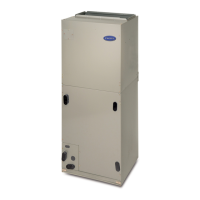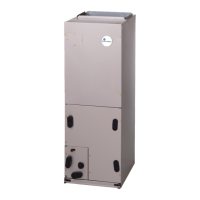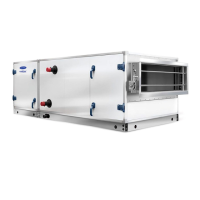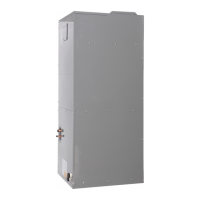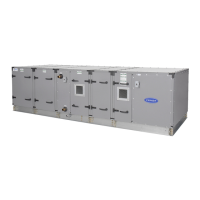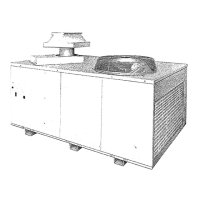FCM4, FEV, FEM4, FJM, FMA4, FSA4, FSM4, FSU4, FVM4, FXM4, REM4, WAH, WAM, WAP, WAX, WBHL: Service and Maintenance Instructions
Manufacturer reserves the right to change, at any time, specifications and designs without notice and without obligations.
16
The blower motor in this unit has blower-on and blower-off delays. The
blower-on delay is 0-30 seconds and will keep the motor running after a
heating or cooling call ends.
If motor does not run, test motor for an open winding or a winding
shorted to motor case. If either is present, replace motor.
ELECTRIC HEATER SERVICE
Service can be completed with heater in place. Shut off power before
servicing.
TIME DELAY
FMA4X have time delay built into the motor logic. FMA4P units with
date codes prior to V1515 have sequencers. FMA4P units with date
codes V1515 or later have a time delay printed circuit board.
The Time Delay Printed Circuit Board (PCB) is a logic controlled time
delay activated by low-voltage control signal (G) from thermostat. The
PCB includes a normally open relay which closes to energize the blower
motor when the G terminal is energized. When the G terminal is
de-energized the relay energizing the blower motor remains closed for
90-100 seconds before opening.
SEQUENCE OF OPERATION
NOTE: The following sequence of operation is based on units installed
with PSC motor and Time Delay Printed Circuit Board (PCB), See
Fig. 11, Fig. 12 and Fig. 13. For units with ECM motor, the off-delay is
programmed into the motor. Follow Table 7 below, ECM Motor Speed
Taps & the corresponding blower off delays for each speed tap.
Continuous Fan
Thermostat closes R to G. G energizes and completes circuit to indoor
blower motor. When G is de−energized, there is a 90s blower off-delay.
Cooling Mode
Thermostat energizes R to G, R to Y, and R to O (heat pump only). G
energizes and completes indoor blower motor. Y energizes outdoor unit
(O is energized for heat pump). When cooling call is satisfied, G is
de−energized, there is a 90s blower off-delay.
Heat Pump Heating Mode
Thermostat energizes R to G and R to Y. G energizes and completes
circuit to indoor blower motor. When heating call is satisfied, G is
de−energized, there is a 90s blower off-delay.
Heat Pump Heating with Auxiliary Electric Heat
Thermostat energizes R to G, R to Y, and R to W1. G energizes and
completes circuit to indoor blower motor. W1 energizes electric heat
relay(s) which completes circuit to heater element(s). When W1 is
de−energized, electric heat relay(s) open, turning off heater elements.
When G is de−energized there is a 90s blower off-delay.
Electric Heat or Emergency Heat Mode
Thermostat closes R to W1. W1 energizes electric heat relay(s) which
completes circuit to heater element(s). Blower motor is energized
through normally closed contacts on fan relay. When W1 is
de−energized, electric heat relay(s) opens, there is no blower off-delay.
(units with ECM motor will have a blower off delay based on motor
speed tap selection).
A150455
Fig. 11 – Time Delay PCB Schematic
Fig. 11 Comments:
1. The THR and THC are connect to transformer output:
2. When the G has signal. The FAN will supply 24VAC power to
control fan relay.
3. When the G signal gone. The FAN will stop 24 VAC output after
90 seconds.
4. CN3, CN7 are dummy connection terminals.
A150462
Fig. 12 – 18 & 24 PCB
Table 7 – Speed Tap and Delay-Off Time
Speed Tap Delay-Off Time
Tap 1 30
Tap 2 90
Tap 3 30
Tap 4 90
Tap 5 30
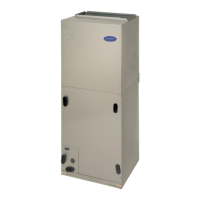
